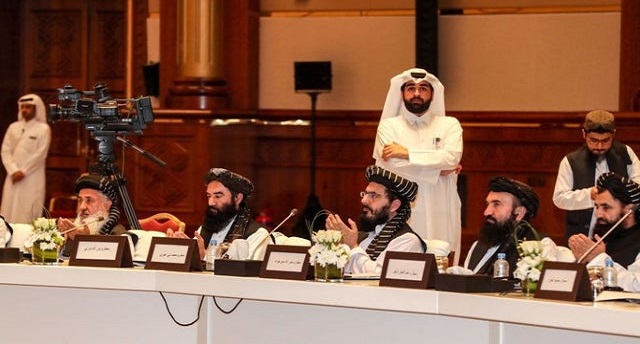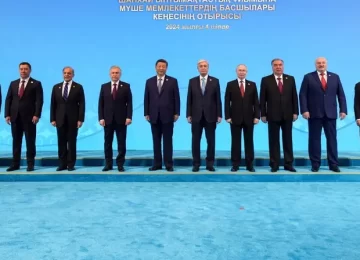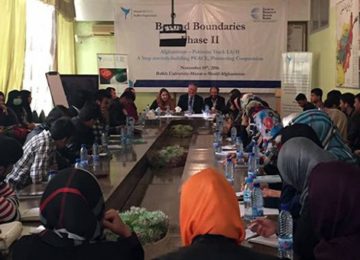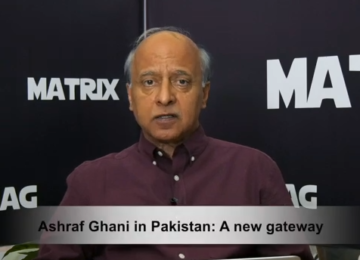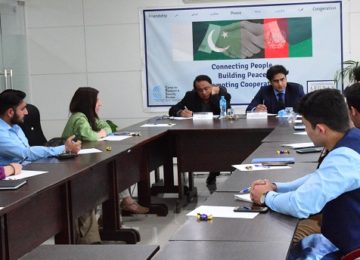July 19, 2019
The chances of peace in Afghanistan are better than they have been in years. We should work for a real peace, not just an excuse to withdraw. To do so, we need to understand three things: an agreement by itself is not peace; the cost of a bad agreement is high; and we need to face the possibility that peace may not succeed.
Peace talks with the Taliban, pushed by the Trump administration’s Ambassador Zalmay Khalilzad, appear to have made progress on the issues of foreign troop withdrawal and, perhaps, counterterrorism. Khalilzad has recognized that, while the U.S. can negotiate withdrawal, only Afghans can actually determine how to live together peacefully.
The Taliban still refuse a critical component of actual peace: negotiations with the Afghan government. This leads many to believe that what the Taliban want is to get powerful foreign forces out so that the Taliban can win militarily. Recently, the Taliban did have a meeting with a group of leading Afghans, including some from within the government (although they were not acting as a government delegation). This meeting wasn’t a negotiation but it is a positive development and may indicate progress. We should support it, but be realistic.
An agreement on paper does not mean peace, particularly if it is only a commitment to talks or procedures that are supposed to fill in the details. Afghanistan has seen numerous agreements over nearly 40 years of war; between parties on the same side as well as opposing forces. Each agreement was broken when one party was strong enough to do so. Afghan political leaders are constantly making commitments to unity and then finding that the agreements break down over the details.
The cost of a bad agreement — that is, one that breaks down after a U.S. and NATO withdrawal — may be high. War will return. Some think this means a Taliban victory and that it is acceptable to threaten the Taliban with a U.S. return (as dubiously credible as that is) if al Qaeda is allowed to come back, and treat the rest as none of our business. But a Taliban victory with the probable loss of human rights and efforts at democracy is only one scenario in a post-U.S. withdrawal breakdown of peace. Another is a return to civil war.
The minorities who have felt Taliban oppression in the past (Tajik, Uzbek, Hazara) constitute much of the army located in Pushtun areas of southern and eastern Afghanistan. Rather than be isolated there if the war goes badly, many are likely to desert the national forces to regroup with their fellows in central and northern Afghanistan. The result would be further breakdown of national institutions and a return to the civil war that lasted nearly a decade.
In such conditions we would face a consolidation of al Qaeda and the Islamic State in the largely ungoverned space of a civil war. The Taliban themselves are concerned about this prospect.
This need not be the result. Afghans may work out a real peace. They deserve our support. But that requires recognizing that a real peace will take time to work out. Neither the Taliban nor the Afghan government and political elite appears to have given serious thought yet to the compromises necessary for agreement. Everything we know about other such conflicts, about the issues and about the history of Afghan negotiations, suggests that this discussion will be long — possibly years long. It is not going to happen by Sept. 1, as Secretary of State Mike Pompeo hopes. Perhaps something could be written on paper by then. But if so, these will be fragile promises, not a reason to again make the mistake of saying “mission accomplished.”
And a ceasefire, desirable as we and most Afghans find it, may not lead to peace. Ceasefires enable each party to refuse concessions and strengthen its position. That may be good for the Afghan government in the short term, but it is unlikely to lead to the substantial concessions needed from both sides to find peace. It is more likely to lead to a breakdown in negotiations and a return to war, especially if during a ceasefire we withdraw and leave a militarily weakened Afghan government alone.
American troop withdrawal needs to be part of peace and we should accept that. But withdrawal should be the fruit of agreement, not a way of steadily eroding the strength of our side while negotiations drone on.
Finally, we need to remember that there may be no middle ground between our vision of some modicum of democracy and human rights and the Taliban’s vision of a return to the Islamic Emirate. Even as we seek peace, we need to remember that the best way to achieve that may be to take our time and maintain sufficient strength to retain policy options, rather than relying on promises alone. In Afghanistan the list of those who relied on promises is long, and they are mostly dead.
Ronald E. Neumann was U.S. ambassador to Afghanistan from 2005-2007 and has made many visits back since. A former deputy assistant secretary of State, he is president of the American Academy of Diplomacy.
Source: THE HILL
Disclaimer: Views expressed on this blog are not necessarily endorsed or supported by the Afghan Studies Center and Center for Research and Security Studies, Islamabad.



